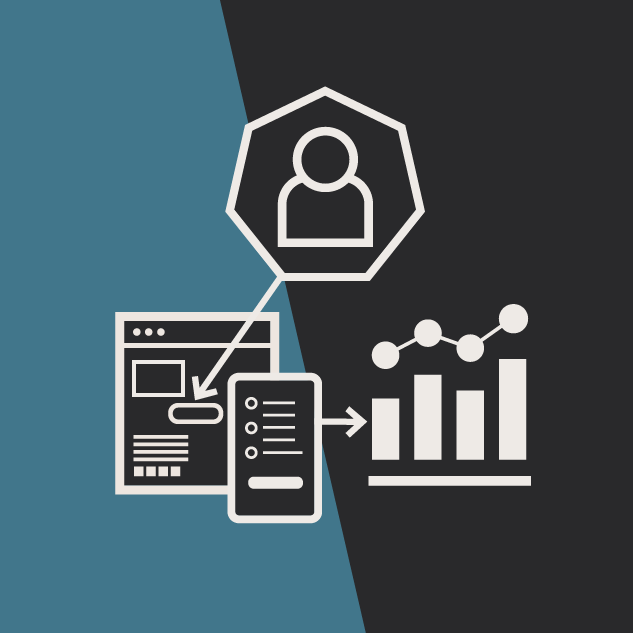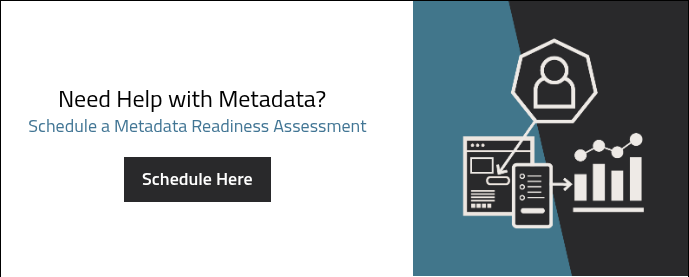Diagram Views
The Hidden Role of Metadata: Teaching AI to Understand Your Content
Jonna Robertson Senior Strategy Lead, Emerging Technology#Digital Marketing, #Industry Insights, #Artificial Intelligence (AI)
Published on October 3, 2025

Metadata is the invisible framework that makes AI reliable, compliant, and useful.
Metadata Is the Language AI Speaks
AI doesn’t just “know” what’s in your systems. It learns from the signals you give it. And in B2B environments—where product catalogs, ERP entries, compliance documents, and marketing assets collide—those signals are often weak, inconsistent, or nonexistent.
That’s where metadata comes in. Metadata is data about your data: titles, descriptions, tags, categories, and context. It’s the invisible layer that helps AI interpret, retrieve, and connect content. Without it, you fall into the same trap as every overhyped AI launch that forgot the first principle: garbage in, garbage out. At Diagram, we believe data matters, and metadata is the glue that makes data usable by AI.
What Metadata Actually Is (and Isn’t)
Metadata is not just keywords stuffed into a CMS field. It’s structured context: document titles, version numbers, authors, timestamps, categories, and tags that tell AI systems what a piece of content is and how it relates to others.
Without this scaffolding, AI treats all content as flat text, struggling to distinguish between a product spec, a sales contract, and a regulatory guideline.
How Diagram helps: We create metadata frameworks that teach AI the difference, so retrieval is fast, accurate, and context-aware.
Why Metadata Matters for AI Agents and Search
AI assistants and search agents thrive on connections. When a user asks, “Show me all product manuals updated in the last year,” an AI can only succeed if those manuals carry metadata like “product type,” “document version,” and “last updated.”
Well-tagged metadata is like a roadmap. Without it, the AI is navigating blind.
How Diagram helps: We specialize in building taxonomies that ensure AI agents always pull the right file, not the outdated PDF buried in someone’s folder.
Metadata in B2B Systems: ERP, CRM, and Beyond
B2B organizations face unique challenges because critical data is scattered across ERP, CRM, sales enablement tools, and marketing platforms. Each system uses its own structure—if any.
- ERP records may lack product lifecycle tags.
- CRM notes often miss standard deal-stage markers.
- Marketing assets may have vague labels like “Brochure_vFinal2.pdf.”
This inconsistency undermines AI. Metadata provides the common thread to link it all together.
How Diagram helps: We unify metadata models across disparate systems, so ERP, CRM, and marketing content speak the same “language” for AI.
Building a Metadata Strategy: From Quick Wins to Long-Term Value
- Start with core categories. Define a consistent taxonomy: product, customer, geography, compliance status.
- Apply metadata to high-value content first. Focus on documents or assets most often used in AI scenarios.
- Automate tagging where possible. AI can assist by suggesting metadata, but human oversight ensures accuracy.
- Govern it. Assign responsibility for keeping metadata updated as content evolves.
How Diagram helps: We design metadata strategies that start simple but scale as your AI use cases grow—avoiding overwhelming teams with complexity at the start.
Metadata as Compliance Insurance
For industries where compliance is critical, metadata can prevent risk. By tagging content with “review date,” “legal owner,” or “compliance category,” organizations ensure that AI never surfaces outdated or non-compliant information without warning.
How Diagram helps: We build metadata frameworks that double as compliance safeguards, so your AI not only works—it works safely.
Metadata Makes AI Possible
Metadata may not be flashy, but it’s essential. Without it, AI delivers half-baked answers and unreliable insights. With it, AI becomes a trusted partner that understands your content, retrieves the right information, and respects compliance boundaries.
At Diagram, we help B2B organizations recognize that data matters—and metadata matters most of all. If you’re ready to teach AI how to understand your content, we can help build the metadata strategy to make it happen.
Garbage In, Garbage Out. Metadata Makes All the Difference
If your content isn’t tagged and structured, your AI will stumble. Diagram helps organizations build metadata frameworks that turn raw assets into AI-ready intelligence.
Related Articles
Results Matter.
We design creative digital solutions that grow your business, strengthen your brand and engage your audience. Our team blends creativity with insights, analytics and technology to deliver beauty, function, accessibility and most of all, ROI. Do you have a project you want to discuss?
Like what you read?
Subscribe to our blog "Diagram Views" for the latest trends in web design, inbound marketing and mobile strategy.

